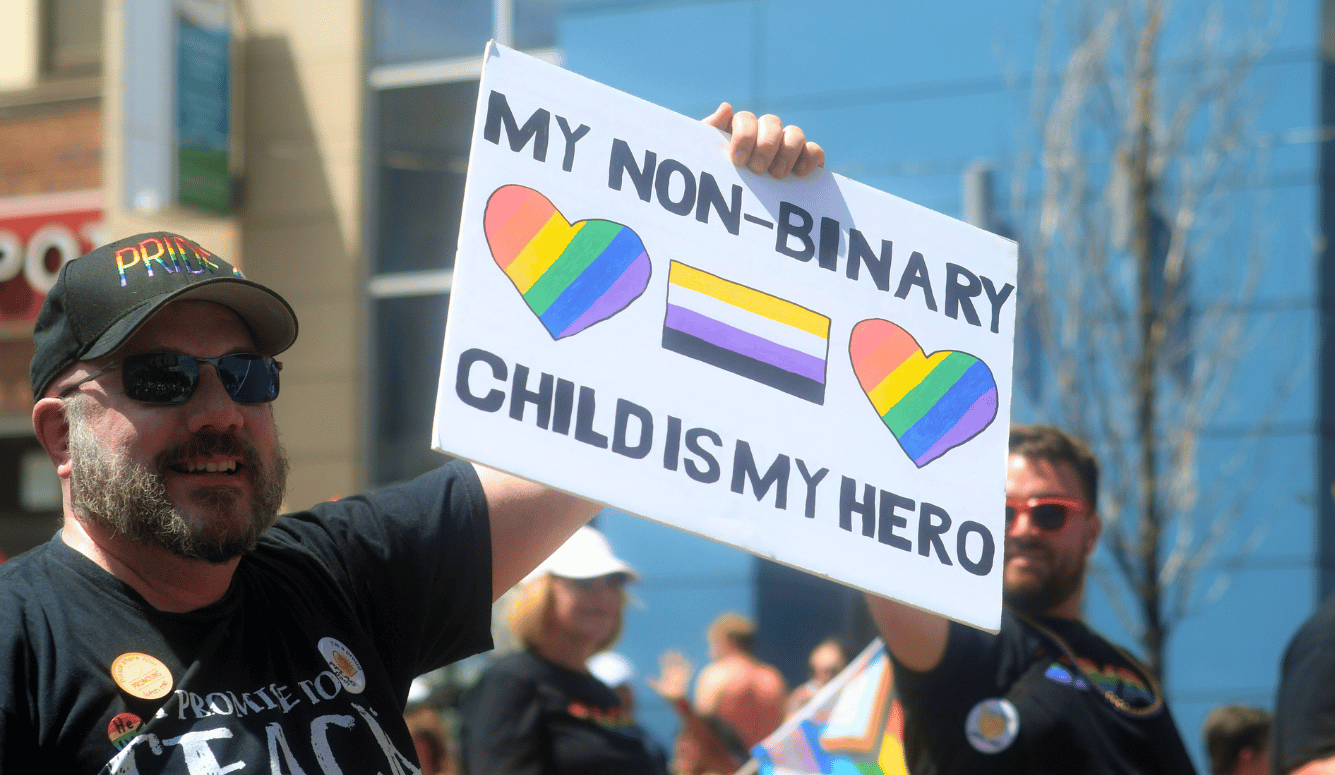Politics
Skewing the Overton Window
The double standard in the way in which fascism and communism, the extremist ideologies of the Right and Left, are regarded distorts political discourse.

Fascism remains the bogeyman of modern Western political culture. As historian Stanley G. Payne observes, “No major modern political phenomenon has been so thoroughly discredited and obliterated as European fascism was in the 1940s. Yet the f-word was never buried, for it had achieved a demonic status like no other, making it very useful in partisan polemics.” To label someone a fascist is to disqualify them from civil discourse entirely.
Despite its comparable—or in some respects greater—destructiveness, communism is rarely invoked with the same moral urgency. Given that fascism and communism represent the most extreme manifestations of Right and Left respectively, and that both left deep scars on the European continent, it is unsurprising that many politicians and intellectuals retain historical or nostalgic affiliations with one or the other. Such sentiments rarely carry serious implications for contemporary politics. Apologists for communism are unlikely to advocate reopening the gulags, nor do fascist nostalgists intend to implement racial laws against Jews.
The party of Italian Prime Minister Giorgia Meloni, Fratelli d’Italia, is often described as “post-fascist.” Similarly, coverage of Marine Le Pen’s Rassemblement Nationale often highlights the fact that among the party’s founders was former Waffen-SS member Pierre Bousquet. Yet how often have you heard that Meloni’s principal rival, the Democratic Party, traces its lineage back to the Italian Communist Party, which was once faithful to Stalin? How frequently is it mentioned that French President Emmanuel Macron has cooperated with Jean-Luc Mélenchon, a man with a Trotskyist past? Mélenchon’s coalition contains a variety of explicitly communist parties, yet this causes no scandal.
In Eastern Europe, many nominally social democratic parties are in fact the rebranded heirs of communist regimes, often with enduring ties to old security structures and foreign intelligence services, particularly Russia’s. These connections imply serious strategic and security concerns. The social democratic parties of Poland, Romania, Croatia, and Slovenia are all direct successors to their respective ruling communist parties. Bulgaria’s Socialist Party maintains an openly pro-Russian foreign policy orientation, as do elements within the Czech Social Democrats and Slovakia’s governing party Smer (Direction–Social Democracy), led by Prime Minister Robert Fico, who recently attended Moscow’s latest Victory Day parade. Throughout Central and Eastern Europe, intellectuals and political figures who were loyal supporters of and sometimes collaborators with communist regimes have seamlessly rebranded themselves as advocates of liberal democratic values, without ever renouncing their prior allegiances. In Germany, the AfD is treated as a pariah, surveilled by the domestic intelligence agency and barred from coalition talks. Yet Die Linke, which has documented ties to former Stasi operatives, is considered a legitimate governing partner in several German states.

Political parties evolve, of course. It is not only a natural but a welcome trend for former communist parties to transform into moderate factions. But it should also be seen as a positive development when parties with far-right origins adopt more moderate stances. After all, many parties have changed ideological course over time, a fact often reflected in their names. Mexico’s long-dominant centrist party is still called the Institutional Revolutionary Party, for example.
But these examples only underscore the asymmetry with which fascism and communism are treated. Associations with fascism are considered an enduring stain, while associations with communism are forgivable past errors. This imbalance has profound consequences for democratic legitimacy and ideological pluralism. When right-leaning parties are treated as suspect by default, scrutinised through the lens of historical guilt, and constantly expected to repudiate long-disavowed associations, the Overton window is constrained from shifting in a rightward direction. Left-wing radicals rarely face any comparable pressure to disavow their totalitarian pasts. This legitimises a steady drift of public discourse to the Left. The Right operates under suspicion in a way that the Left does not—even though many leftists continue to embrace the ideologies that underpinned some of the most repressive regimes of the twentieth century. This can lead to the paradox of open societies that mistrust half their electorates, permitting radicalism from one direction while policing even moderation from the other.
Neither Fratelli d’Italia nor Rassemblement National advocates fascist policies today. These parties do not reject the democratic framework, they are not authoritarian, neither do they promote militarism, call for a corporatist state, or espouse radical nationalism. The relentless emphasis on their fascist roots serves a political function: to block the revival of ideas that, until quite recently, were widely accepted across the democratic world. Policies centred on national sovereignty, the primacy of domestic citizens in welfare or immigration policy, preservation of national culture and scepticism toward supranational governance were once mainstream positions. As UK Labour MP Jonathan Hinds has noted, “Controlled immigration was once a left-wing cause. It was a basic tenet of trade unionism—not to mention economics—that the number of workers in a labour market dictates the rate of pay. When more and more people compete for the same jobs, employers can cut wages.”
One of the key preconditions for revolution seems to be a young society. As Herbert Moller first pointed out in 1968, the Reformation and the French and Bolshevik Revolutions all coincided with demographic youth bulges. The youth share of Germany’s population was at its peak in 1933. The 2011 Arab Spring was also predominantly led by young people. This is one reason why fascists embraced a cult of youth, in contrast to the conservative establishment they opposed. It seems unlikely that right-wing radicalism will become a potent revolutionary force in the West again, when the median age in most European societies is well over forty—in Germany it exceeds 45.
Indeed, the Left has largely abandoned the white working class as potential revolutionaries, as an aging population cannot fulfil this role. As Slavoj Žižek has noted, “the whole history of Marxism is the history of searching for some authentic revolutionary subject. Third World peoples, Chinese peasants, Cuba….” The greatest revolutionary potential today, in this demographic sense, lies with Muslims, whose median age in Europe is eleven years younger than that of the non-Muslim population. This may partially explain the frequent alliances between Islamists and the Left.
In their recent book, Fighting the Last War: Confusion, Partisanship, and Alarmism in the Literature on the Radical Right, Tamir Bar-On and Jeffrey M. Bale document how academic discourse about the radical right has been shaped by what they term a “Brown Scare.” According to Bar-On and Bale, this Brown Scare operates by reclassifying once-commonplace political views as “radical right,” while downplaying or ignoring genuinely extremist ideologies—chief among them, Islamism. This represents a curious inversion in the political imagination of the West. Beliefs that were once taken for granted are now cast as reactionary or extremist. Meanwhile, ideas that are genuinely radical—open borders, gender self-identification—are treated as moral common sense. Such positions were almost non-existent as recently as ten years ago, thus they are radical in the conventional sense of the term, as they have no precedent. As Bar-On and Bale write,
throughout history, the norm in most parts of the world has been for particular human groups to create political entities and states that advance their own ethnic, cultural, and social interests. … Conversely, it is extremely rare to find polities that privilege the interests of foreign or minority ethnocultural groups at the expense of their own majorities, as is increasingly becoming the norm in modern Western “multiculturalist” societies … In short, if the normal state of human affairs is now viewed as a necessary marker of the “radical right,” that would mean that most peoples in most times and places could be characterized, absurdly, as “radical rightists.”
Together, these tendencies have created a political compass that only points leftward. Moderate right-wing parties are expected to shun cooperation with those further to their right, no matter how electorally significant or democratically legitimate they may be. Left-wing parties are under no comparable obligation. They can—and frequently do—form alliances with movements significantly further left. This asymmetrical political quarantine structurally disadvantages the right of centre. And that may help explain the increasingly unbalanced nature of European political discourse.






